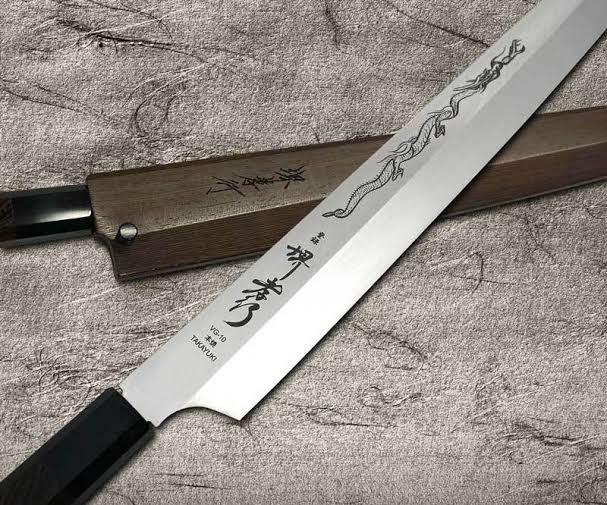The world’s most renowned knives are Japanese chef’s knives. They have made unique quality designed
and durability knives. Their knives cost over $900 and more. A Japanese artisan spends a lifetime
learning to become a master of knives by metaling, sharpening, and polishing the edge of the knife’s
blade. These are the basic skills that they inherited from the knives.
Points to be noted on expensive of Japanese knives and reason behind their coveted – Takamura Terukazu spent 37 years crafting the chef’s knives at his family’s factory in Echizen. The
process required 10 years of practice to produce the 100 knives at a time. Japanese knives are lighter
and brighter when compared to other imported knives. It allows precise cuts through the low end, and
most Takamura blades cost a couple of 100$. It Was also produced by Takamura. The most expensive
knives sold at shops in Japan at Rs.496800
The first knife was Takamura Hamono used by the chefs, which gave them stainless steel called high-
speed powdered steel. For saws, and drills the power tools are designed exclusively and this gave them
strength and durability of two qualities Japanese chef’s knives are known popularly today. Hammering
begins, when knives blades are hardened and strengthened through the electric oven. At this point
artisan experience producing a blade of ideal strength and thinness. 60 years ago the Takamura father
recognized the benefit of knives with a textured surface like polished knives of chefs.
The following factors result in the premium price of knives – ● Traditionally it’s very hard to find Craftsmanship to design knives.
● The top-grade steel will be used as Materials for the handles of knives and this will be specially
made with sandalwood, shitan, or deer antlers.
● From the Japanese knife makers, we can hear that Scarcity and privilege of the custom knife will
be rarely found in the nearing cities of Japan.
Names of few costlier knives of Japanese and reasons of so expensive – 1. Miyabi black 8-inch chef’s knife: The blade is made of 133 layers of micro-carbide powdered
steel, uses the unique black ash wood handle and is an artful masterpiece.
2. Miyabi Birchwood 8-inch chef’s knife: This knife is available on Amazon and Zwilling.com. The
blade has a flowering Damascus pattern, made with a white handle with a thin red line around
the handle’s top and bottom. This knife is created with an SG2 micro-carbide powder steel core
with 100 layers.
3. Shun premier 8-inch chef’s knife: This knife is in trend and Miyabi, shun tends to be so
expensive because of its premier quality. This knife is available on Amazon with lightweight,
versatile, comfortable, and easy to use. This knife is crafted with VG-Max super steel at its core.
4. Shun dual-core 8-inch Kiritsuke knife: This knife is technically made up of Kiritsuke blades.
These are versatile, but they take a bit of knife skill to master. The knife sets kitchen tasks easily and is crafted with 16 degrees of razor sharpness per side of edges. The blade is made up of
VG10 layers of stainless steel.
Therefore the above-mentioned points describe the expensive Japanese knives. Chefs use these knives
regularly and they are familiar with these kinds of kitchen knives.

